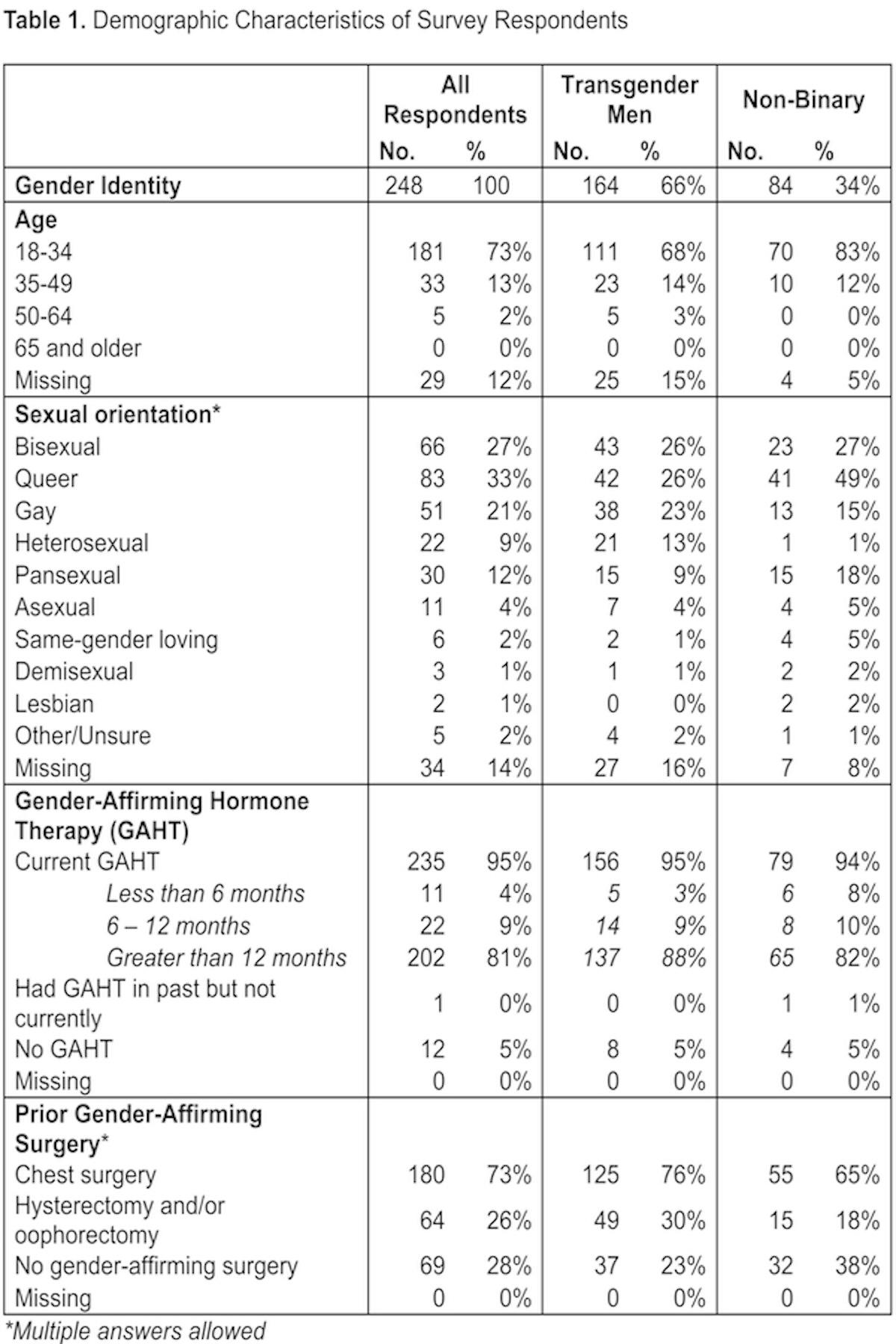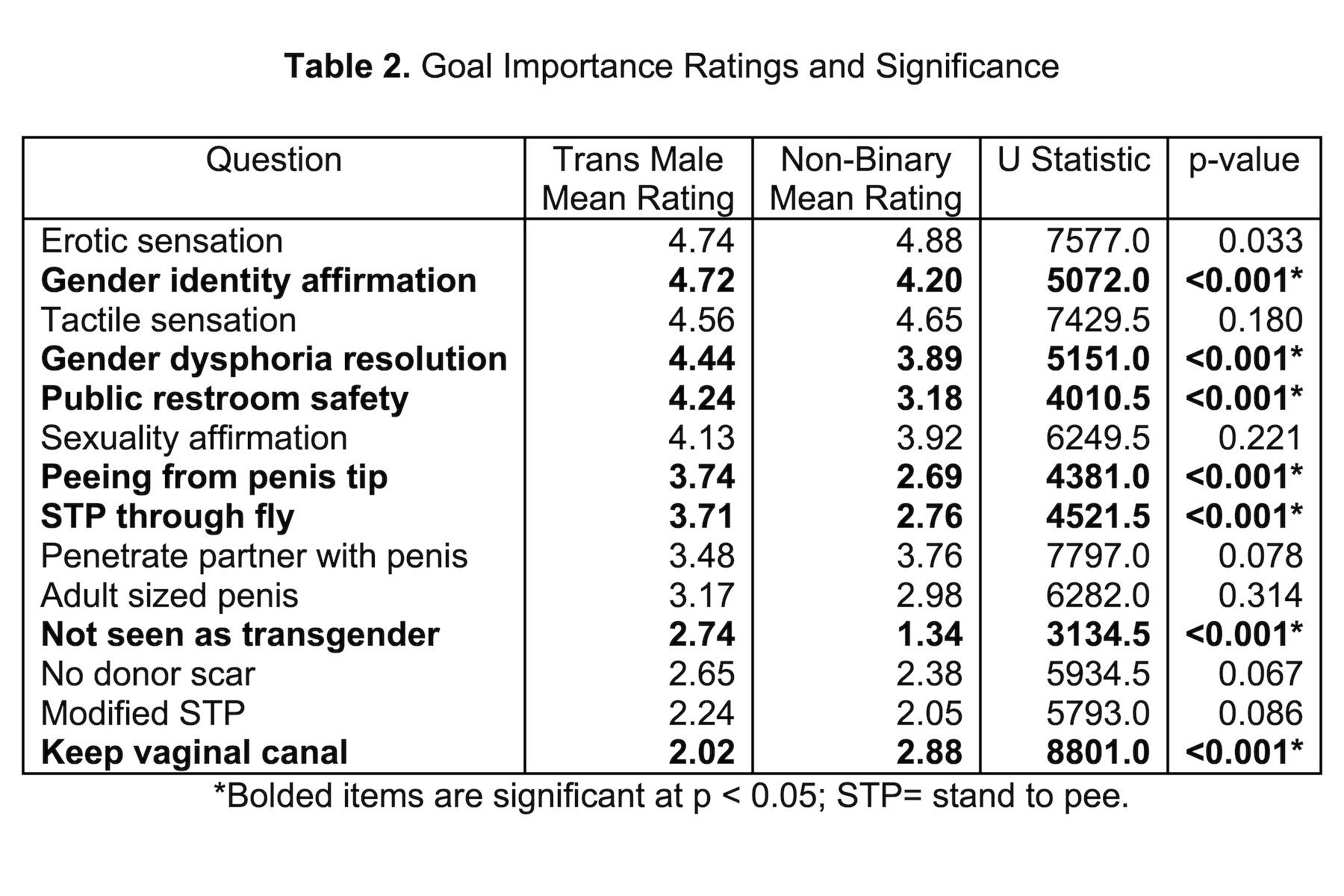BACKGROUND: Understanding patient goals for metoidioplasty and phalloplasty gender affirming surgery (MaPGAS) is paramount to provide satisfactory, preference-sensitive outcomes, yet there is a knowledge gap in understanding MaPGAS goals and how this may vary between transgender men and non-binary individuals assigned female at birth (AFAB). The purpose of this study was to evaluate surgical goals in transgender men and non-binary individuals AFAB considering MaPGAS.
METHODS: A co-produced online survey was created via literature review and qualitative interviews and distributed via social media and a community health center to participants AFAB aged ≥ 18 years who had considered but not yet undergone MaPGAS. Demographics, surgical history, and Likert scale ratings of importance (1 = Not at all important, 5 = Very important) of 14 surgical goals were captured. Differences in goal importance ratings were calculated using the Wilcoxon-Mann-Whitney Rank Sum U Test. Responses to an open-ended question on other important MaPGAS goal considerations were thematically categorized by two reviewers.
RESULTS: A total of 248 eligible participants completed the survey; participants included transgender men (64%) and non-binary individuals (36%) AFAB (Table 1). Both groups rated maintaining tactile and erogenous sensation as top priorities and cited complications as major concerns in the open-ended responses. Most participants employed ad hoc risk assessments to evaluate the complications associated with MaPGAS against their personal surgical goals. Significant differences emerged in half of the goals (7/14), with transgender men more likely to place importance on ‘passing’ as cisgender, public restroom comfort, peeing through the tip of the penis, standing urination through the fly, and resolution of gender dysphoria, and non-binary individuals more likely to prioritize retaining a vaginal canal to receive penetration and gender identity affirmation (Table 2).
CONCLUSIONS: Our study is the largest evaluating patient MaPGAS goals and compare gender identity cohorts, and our study team includes transgender researchers with lived experience. We found that while maintaining tactile and erogenous sensation and minimizing surgical complications were universally important goals, significant variation emerged between transgender men and non-binary individuals in over half of MaPGAS goals highlighting the need for personalized preoperative counseling.

